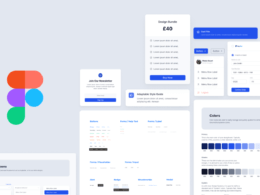In the bustling world of e-commerce, the term “conversion” is the holy grail. As an online retailer, your goal is to transform casual browsers into paying customers. However, what many overlook is the pivotal role of UX (User Experience) design in sealing the deal.
In this article, we will delve into the fascinating world of UX design and how it can significantly impact your e-commerce success. So, buckle up, and let’s dive in!
What is UX Design, and Why Does It Matter in E-commerce?
User Experience design focuses on crafting websites and apps that are user-friendly, intuitive, and aesthetically pleasing. It’s all about making the customer’s journey enjoyable and efficient, from the moment they land on your site to the final click of the “Buy Now” button.
In e-commerce, the stakes are high. Shoppers want quick, hassle-free experiences. They want to find what they’re looking for as soon as possible, easily understand product information, and seamlessly complete their purchases.
The Power of First Impressions
You never get a second chance to make a first impression. When customers visit your e-commerce site, they immediately form an opinion about your brand.
If your website is clunky, confusing, or outdated, that initial impression can have a detrimental effect on your conversion rate. This is where UX design comes into play.
A well-designed website will greet visitors with an attractive, easy-to-navigate layout. Clear menus, intuitive search bars, and compelling visuals help users quickly find what they need. The easier it is for customers to navigate, the more likely they are to stick around and explore your offerings.
Smooth Sailing: The Customer’s Journey
Imagine your e-commerce website as a well-designed amusement park. UX design is the blueprint for an enjoyable ride.
Navigation is key. Every element of your site, from menus to product listings, must be user-friendly. Pages should load swiftly, and forms for sign-ups or checkouts shouldn’t be a hassle to complete. The good news is that these hassles can be avoided with ease if you choose to rely on the best UX research software on the market. By minimizing obstacles and streamlining the customer’s journey, you increase the likelihood of conversions.
Mobile Matters: Adapt or Lose Out
Everyone and everything is going mobile. A growing number of users access e-commerce sites from smartphones and tablets. Ignoring the mobile experience can be detrimental to your online business.
Responsiveness is a fundamental aspect of UX design. Your website must look and function just as smoothly on a smartphone as it does on a desktop. When users can shop conveniently from their mobile devices, you open the door to a broader audience.
Clarity in Product Presentation
An essential element of e-commerce UX is how you present your products. Customers should know more about the products they’re interested in.
High-quality images from multiple angles, detailed product descriptions, and customer reviews provide valuable information that helps potential buyers make informed decisions.
User reviews, in particular, play a vital role in building trust. When shoppers have insight into what other customers have experienced, it instills confidence. Put simply, word of mouth encourages conversions.
Cart and Checkout Optimization
The e-commerce journey culminates in the shopping cart and checkout process. It’s where the magic of conversion occurs.
A smooth and transparent checkout process is essential. Customers should know more about the total cost, including taxes and shipping, before they reach the checkout stage. Hidden fees can lead to cart abandonment.
Multiple payment options and a guest checkout feature can also enhance the overall user experience.
The Power of Personalization
Personalization is another crucial aspect of UX design in e-commerce. The more you understand your customers and tailor their experiences, the more likely they are to convert.
Recommendation engines, which suggest products based on a customer’s past behavior, can be remarkably effective. Personalized product recommendations provide shoppers with relevant options, increasing the likelihood of a purchase.
Testing, Testing, 1, 2, 3
Successful e-commerce sites never stop evolving. Regular testing is a cornerstone of UX design.
A/B testing, for instance, allows you to compare two versions of a webpage to see which one performs better in terms of conversions.
An iterative approach to design means you can continually refine your site based on real user data. By tracking how users interact with your website and making adjustments accordingly, you can consistently improve the user experience and, ultimately, boost conversions.
The Speed Factor: Loading Times Matter
A slow website can be the kiss of death for e-commerce conversions. Users today have short attention spans and even shorter patience when it comes to waiting for pages to load. Slow-loading sites can lead to high bounce rates.
Optimizing your website’s speed is an integral part of UX design. Compressing images, minimizing code, and using content delivery networks (CDNs) can significantly improve loading times.
A quick response ensures that customers can access the information they need quickly.
Trust Is Everything
Trust is a vital component of e-commerce conversions. Customers need to trust your site, products, and checkout process. UX design plays a significant role in building and maintaining that trust.
Security symbols and trust badges prominently displayed during the checkout process can instill confidence.
Clear return policies and contact information also contribute to trustworthiness. When customers know they can trust your site, they are more likely to make a purchase.
Feedback Loops: Listen to Your Customers
In the world of UX design, customer feedback is your golden ticket to higher conversion rates. Paying attention to what your customers are saying can help you make data-driven improvements.
You should provide customers with opportunities to share their thoughts and experiences. Online surveys, feedback forms, and product reviews can all be valuable sources of information.
Knowing more about your customers’ pain points and preferences allows you to make targeted UX enhancements.
Conclusion: Know More, Convert More
In the fiercely competitive world of e-commerce, UX design is the magic ingredient. It’s the key to creating a positive, efficient, and trustworthy online shopping experience. As a business owner, you should never underestimate the role of UX design in e-commerce conversions.
Every step impacts your conversion rate—from that critical first impression to the smooth scrolling through your website, and, finally, the checkout process.
Don’t underestimate the power of personalization, testing, and the need for a speedy website. Trust is the foundation, and listening to customer feedback is the compass.
As you venture further into the world of e-commerce, you’ll know more about the crucial role UX design plays in your quest for conversions. So, invest in user experience, and watch your e-commerce success story unfold before your eyes.












